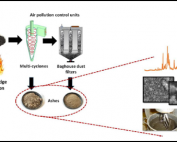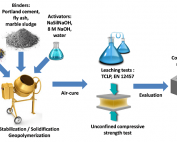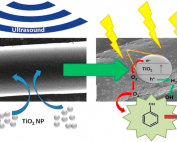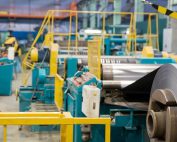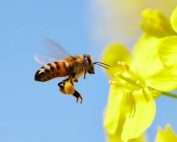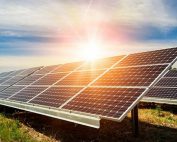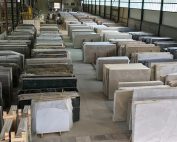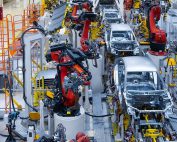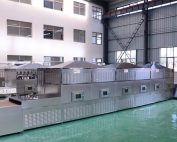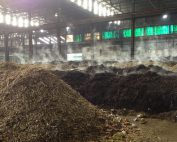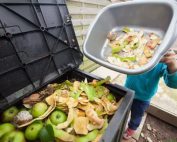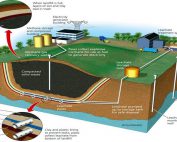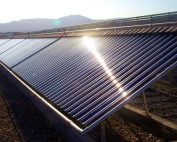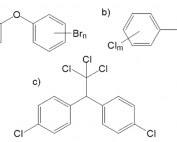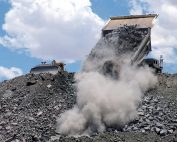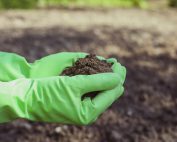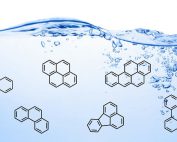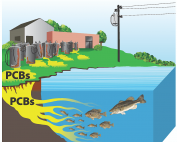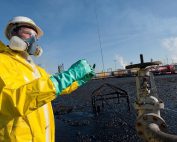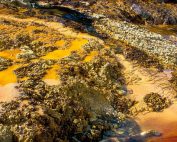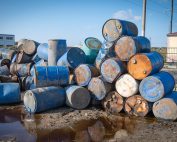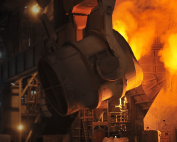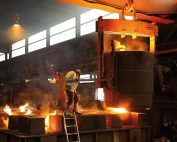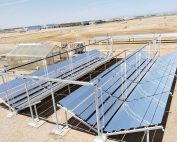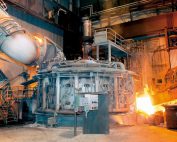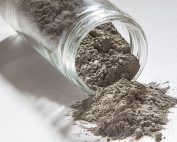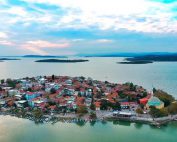Uluslararası Yayınlar
Characterization of sewage sludge incineration ashes from multi-cyclones and baghouse dust filters as possible cement substitutes
2020 Incineration is not a final disposal method for sludge management since a significant amount of ash is generated. Although some published literature reported on the use of sewage sludge ashes (SSAs) as
Recycling of sewage sludge incineration ashes as construction material
2020 The purpose of this study was to investigate if the sludge incinerator ash can be recycled as a construction material. Stabilization/solidification (S/S) and geopolymerization technologies were applied to the sludge ash to
Ultrasound and heterogeneous photocatalysis for the treatment of vinasse from pisco production
2020 The purpose of this study was to investigate if the sludge incinerator ash can be recycled as a construction material. Stabilization/solidification (S/S) and geopolymerization technologies were applied to the sludge ash to
Characterization and Management of the Solid and Hazardous Wastes from Manufacturing Industry
2019 Manufacturing industry refers to those industries involved in fabrication, processing, or preparation of products from raw materials and commodities. Raw materials or commodities such as foods, chemicals, textiles, machines, wood, or refined
Photocatalytic degradation of chlothianidin: effect of humic acids, nitrates and oxygen
2019 The use of neonicotinoid insecticides has been constantly revised because of their impact on bees, causing their decrease and bee malady. Unfortunately, because of the worldwide differences in pesticide regulation, chlothianidin is
Optimization of Solar Brine Evaporation Process: Introduction of A Solar Air Heater
2019 The purpose of this study was to investigate the evaporation process of reject brine by using a solar system. The solar system contained a solar still coupled with a solar air heater
Marble Sludge Recycling by using Geopolymerisation Technology
2018 The purpose of this study was to investigate the recycling potential of marble sludge, which is generated from the cutting and grinding process of marble. Geopolymerization technology was applied to this aim. Waste
Evaluation of the Solid and Hazardous Wastes Generated by the Automotive Industry in Turkey
2018 Development of the automotive industry not only facilitated our daily lives but also introduced environmental pressures. The automotive industry consists of both the original equipment manufacturers (OEMs), and a great variety of suppliers
Microwave Drying of Automotive Industry Paint Sludge
2018 The moisture content of process sludges generated by industries is an important problem affecting the cost and convenience of sludge management. Sludge can be dried to decrease its volume and reducemost of themoisture.
Bioconversion of industrial wastes: paint sludge from automotive manufacturing
2018 The compostability of water-based paint sludge originating from the automotive industry was investigated. Six reactors were operated. Wastewater treatment sludge from the same industry was used as additional substrate, and corncob was used
Food loss and waste management in Turkey
2018 Food waste can be an environmental and economic problem if not managed properly but it can meet various demands of a country if it is considered as a resource. The purpose of this
Landfill Leachate Treatment by using Advanced Oxidation Processes
2016 This study aimed to investigate the efficiency of ozone based oxidation processes in the treatment of landfill leachate. Two reactors, one equipped with a UVC lamp, the other subjected to natural sunlight,
A Review On Paint Sludge From Automotive Industries: Generation, Characteristics And Management
2016 The automotive manufacturing process results in the consumption of several natural sources and the generation of various types of wastes. The primary source of hazardous wastes at an automotive manufacturing plant is
Investigation of the factors influencing the efficiency of a solar still combined with a solar collector
2016 A solar still was designed for the evaporation of desalination brine. The influence of several factors, such as the basin heating, the material of the cover (glass or polycarbonate), the existence of
Air-Soil Exchange of PCBs: Levels and Temporal Variations at Two Sites in Turkey
2014 Seasonal distribution of polychlorinated biphenyls (PCBs) at the air–soil intersection was determined for two regions: one with urban characteristics where traffic is dense (BUTAL) and the other representing the coastal zone (Mudanya).
Immobilization of Antimony Waste Slag By Applying Geopolymerization and Stabilization / Solidification Technologies
2014 During the processing of antimony ore by pyrometallurgical methods, a considerable amount of slag is formed. This antimony waste slag is listed by European Union as absolutely hazardous waste with European Waste
Seasonal Variations of Polychlorinated Biphenyls in Surface Soils and Air–Soil Exchange in Bursa, Turkey
2013 This study investigates the seasonality of polychlorinated biphenyl (PCB) levels in soils of Bursa city located in northwestern Turkey. Forty-three soil samples were collected each season during a 1-year period. Air and
Removal of polycyclic aromatic hydrocarbons from municipal sludge using UV light
2012 This study includes research into using UV light to remove Polycyclic Aromatic Hydrocarbons (PAHs) from municipal sludge. The effectiveness of TiO2 as a photocatalyst on this UV application was also determined. Sludge
Air-soil exchange of PCBs: Seasonal variations in levels and fluxes with influence of equilibrium conditions
2012 The variations in the occurrences of PCB congeners both in soil and air were investigated in conjunction with each other, and the changes in the fugacity fractions and flux levels were examined
Industrial hazardous waste management in Turkey: Current state of the field and primary challenges
2010 A holistic evaluation of a country’s hazardous waste management(HWM)practices is useful in identifying the necessary actions to focus on. Based on an analysis of industrial hazardous waste (HW) generation in Turkey, this
Spatial and temporal distribution of polychlorinated biphenyl (PCB) concentrations in soils of an industrialized city in Turkey
2010 Surface soil (0e5 cm) samples from 43 sampling sites covering the entire urban territory of Bursa, an industrialized city in Turkey, were collected in each season and analyzed for 83 polychlorinated biphenyls
Prediction of the PCB Pollution in the soils of Bursa, an industrial city in Turkey
2009 The purpose of this study was to predict the equilibrium soil concentrations and distributions of 41Polychlorinated Biphenyl (PCB) congeners from the air data measured at 4 sites (urban, suburban, residential, and industrial)
Comparison of polycyclic aromatic hydrocarbons (PAHs) levels in sludges from municipal and industrial wastewater treatment plants
2009 This study was carried out to investigate the concentrations and potential sources of the polycyclic aromatic hydrocarbons (PAHs) in sludge of 14 wastewater treatment plants (WWTPs). Sludge samples were collected from 2
Steel foundry electric arc furnace dust management: Stabilization by using lime and Portland cement
2008 The purpose of this study was to determine an appropriate treatment for steel foundry electric arc furnace dust (EAFD) prior to permanent disposal. Lime and Portland cement (PC)-based stabilization was applied to
Effect of surface area during stabilization of electric arc furnace dusts from steel foundries
2008 This study examined the effect of waste particle size on stabilization performance of hazardous electric arc furnace dusts (EAFD) from steel foundries through the measurement of the temperature rise during hydration and
Solar drying in sludge management in Turkey
2007 Two main wastewater treatment plants in Bursa city in Turkey will start to operate and produce at least 27,000 tons of dry solids per year by the end of 2006. The purpose
Properties of steel foundry electric arc furnace dust solidified/stabilized with Portland cement
2007 Electric arc furnace dust from steel production is generated in considerable amounts worldwide and needs to be treated as hazardous waste. The aim of this study was to investigate the properties of
Stabilization and Solidification of Waste Phosphate Sludge Using Portland Cement and Fly Ash as Cement Substitute
2005 Stabilization and solidification of the waste phosphate sludge (WPS) using Portland cement (PC) and fly ash (FA) were studied in the present work. The WPS content in the cement mortars varied from
Ecological Risk Assessment and Problem Formulation for Lake Uluabat, a Ramsar State in Turkey
2004 Unlike the United States and the European Union, developing countries do not have sufficiently structured legal and institutional systems to apply certain environmental management tools such as ecological risk assessment. However, it
